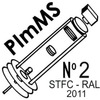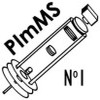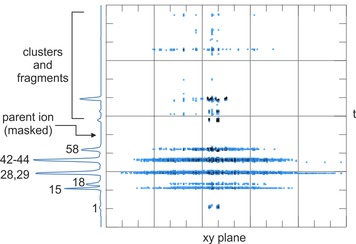MenuApplicationsSpatial Imaging of Chemical Compounds Velocity Mapping Coincidence Imaging Molecular Motion Tissue Imaging DevelopmentFast Scintillators Direct Ion Detection |
Molecular Velocity Mapping ExperimentsBy studying the velocities of the products of either reactive or non-reactive collisions, or photolysis experiments, features of the underlying processes can be learned. These experiments require that the products of interest are ionised and these ions are then accelerated towards a position sensitive detector. By manipulating the accelerating electric field it is possible to map ions with the same initial velocity to the same point on the detector. Ions of different mass to charge (m/z) ratios will be accelerated to different final velocities and so will hit the detector at different times. Velocity mapping experiments use spatialy resolvable detectors similar to the ones described here. Again a conventional framing camera would then be used to obtain the image on the scintilating screen corresponding to a given m/z range. This requires the experiment to be repeated for each species of interest. The PImMS sensor allows all the products to be imaged simultaneously reducing the time needed to record the data. Related Publications |




